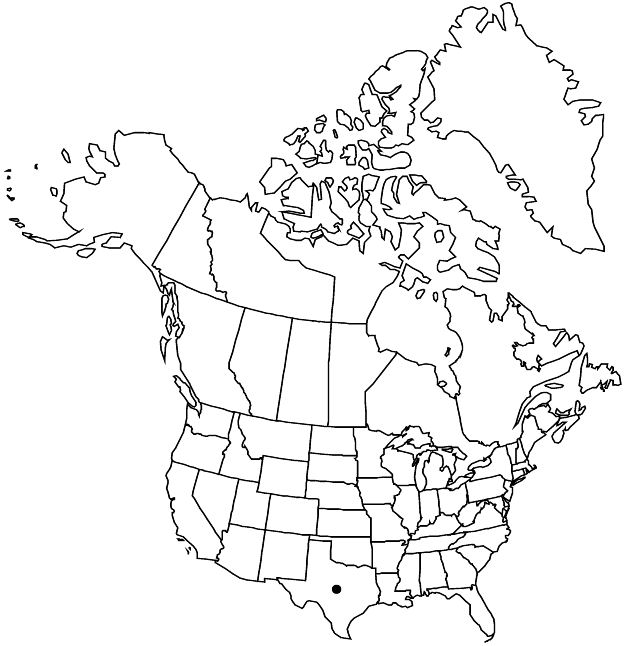Difference between revisions of "Euphorbia wrightii"
Pacif. Railr. Rep. 2(4): 174. 1857.
FNA>Volume Importer |
FNA>Volume Importer |
(No difference)
| |
Revision as of 18:17, 24 September 2019
Herbs, perennial with cylindric rootstock or elongated tubers. Stems erect, branched, densely clumped, previous year’s dead stems often persistent, 20–50 cm, glabrous. Leaves alternate, persisting, spreading or ascending; stipules 0.1–0.3 mm; petiole absent; blade linear to linear-filiform, (17–)20–40 × 1–2.5 mm, base cuneate, slightly sheathing stem, margins entire, apex broadly acute to rounded, abaxial surface glabrous or sparsely villous, adaxial surface glabrous; venation obscure, only midvein conspicuous on wider leaves. Cyathia usually in terminal dichasia, rarely pleiochasia; peduncle (3–)5–15 mm, all peduncles and cyathia persistent on plant, glabrous. Involucre campanulate, 1.5–2 × 1.8–2.5 mm, pilose; glands 5, green, broadly elliptic, 0.7–0.8 × 1 mm; appendages white to pink, orbiculate, 0.5–1 × 1.3–1.8 mm, coarsely erose. Staminate flowers 20–25. Pistillate flowers: ovary strigose to tomentose; styles 1 mm, 2-fid at apex. Capsules depressed-globose, 1 locule usually aborting, 2.5(–3) × 2.7–3.3(–5) mm, sparsely tomentose; columella 2.6–3 mm. Seeds gray-green to gray-brown, globose-ovoid, 2.2–2.9 × 1.8–2 mm, shallowly and obscurely pitted; caruncle absent.
Phenology: Flowering and fruiting spring–fall.
Habitat: Open grasslands and uplands, often on limestone outcrops.
Elevation: 500–1000 m.
Distribution

Tex., Mexico (Coahuila).
Discussion
Within the flora area, Euphorbia wrightii is endemic to the western Edwards Plateau and adjacent rolling plains in western Texas.
Selected References
None.